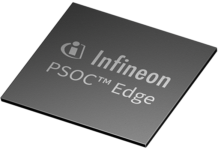In the realm of modern business, where agility and efficiency reign supreme, inventory management plays a pivotal role in determining success. The concept of “Just in Time” (JIT) inventory management has become synonymous with streamlined operations and optimized resources. However, achieving JIT precision requires more than just strategy; it demands the integration of advanced tracking technologies that provide real-time insights into inventory movement, ensuring seamless operations and unparalleled customer satisfaction.
At its core, Just in Time inventory management revolves around supplying products exactly when they are needed and in the quantities required, minimizing excess inventory and associated costs. The JIT approach enhances operational efficiency, reduces storage costs, and mitigates the risk of obsolete products sitting on shelves.
While JIT inventory management promises numerous benefits, it comes with its set of challenges. The fine balance between supply and demand can be easily disrupted by unforeseen events – from supply chain disruptions to sudden shifts in consumer preferences. This is where the role of advanced tracking technologies becomes critical.
Some of the major role the advance tracking technology carry out include:
- Advanced tracking technologies, including barcode systems, RFID (Radio-Frequency Identification), and IoT (Internet of Things) sensors, offer unprecedented visibility into inventory movement. These technologies enable businesses to monitor their inventory in real time, from the moment it enters the warehouse to the moment it reaches the customer’s doorstep.
- Real-time visibility is the bedrock upon which JIT precision is built. With advanced tracking technologies, supply chain managers gain insights into inventory levels, locations, and movement patterns at any given moment. This visibility empowers them to make informed decisions, anticipate demand fluctuations, and proactively adjust inventory levels to meet changing requirements.
- Advanced tracking technologies do not merely provide data; they offer the tools for insightful analysis. By collecting and analyzing data on consumer behavior, historical sales patterns, and external factors, businesses can fine-tune their demand forecasting. This data-driven approach ensures that inventory levels are aligned with actual demand, reducing the risk of shortages or overstock situations.
- Advanced tracking technologies enable optimized replenishment strategies. Supply chain managers can set up automatic reorder points based on historical consumption patterns and lead times. When inventory levels drop to a predefined threshold, the system triggers a reorder, ensuring that products are replenished before stockouts occur.
- Additionally, these technologies streamline order fulfillment processes. When an order is placed, the system can identify the nearest available stock and initiate the shipping process, minimizing delays and enhancing customer satisfaction.
- Disruptions are an inherent part of the supply chain landscape. However, advanced tracking technologies provide a cushion of resilience. In the face of disruptions, supply chain managers can swiftly identify alternative sources of supply, reroute shipments, or adjust production schedules to minimize the impact on JIT operations.
While advanced tracking technologies offer a plethora of benefits, their implementation is not without challenges. Integration into existing systems, data security concerns, and the need for employee training are among the obstacles that businesses must navigate.
Looking ahead, the trajectory of advanced tracking technologies is promising. The convergence of IoT, data analytics, and artificial intelligence will usher in a new era of smart inventory management. Imagine a scenario where predictive algorithms anticipate demand shifts, adjusting inventory levels in real time and ensuring JIT precision even in the face of the unexpected.
To conclude, we can say that, in an era where consumer expectations are soaring and market dynamics are evolving at an unprecedented pace, achieving Just in Time precision in inventory management is not just a strategy; it’s a necessity. Advanced tracking technologies offer the tools to transform this vision into reality. By providing real-time visibility, data-driven insights, and resilience in the face of disruptions, these technologies empower businesses to operate with unmatched efficiency and customer-centricity.
As technology continues to evolve, the path to seamless inventory management becomes clearer. The integration of advanced tracking technologies will undoubtedly shape the future of precision, enabling businesses to thrive in a landscape where agility and responsiveness are the keys to success.














